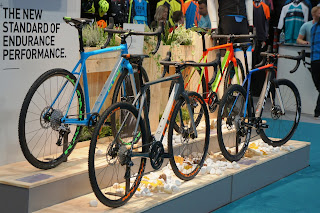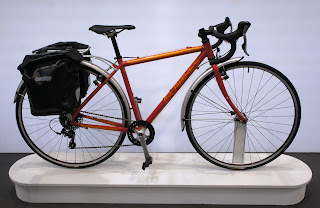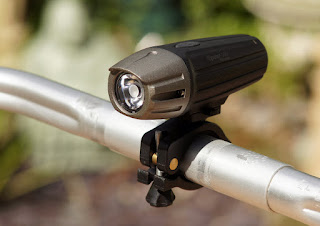This presented an ideal opportunity to see how resilient Pure bike grease is, compared with Green Oil eco grease and through Autumn/early winter. https://www.sevendaycyclist.com/green-oil-ecogrease-long-ter-test
Another Woodman Saturn, like
that fitted to the Teenage Dream and Holdsworth was my first choice, not least
as they’re incredibly smooth and very well sealed from the elements. However,
these have been discontinued and finding something NOS (New old stock) was
proving tricky.
With that in mind, FSA Orbit
XLII seemed an obvious and relatively inexpensive alternative. Mine for £18.99.
Just as well replacement isn’t urgent, since it arrived without one of the cups.
Nonetheless, to their credit, the dealer apologised and rushed me a replacement
cup 1st class.
Unless we get a more exotic
grease in for testing, I will probably default to Park PPL1 or White Lightning Crystal grease https://www.sevendaycyclist.com/white-lightning-crystal-grease
. Think I’ll make a boot from old inner tube around the lower race for some
additional protection, while I’m at it.
An old 26x1.95 Kenda thorn
resistant model seems an ideal candidate but generally speaking, any Mountain
bike/BMX section will fit snugly without recourse to cable ties/similar.
These might be necessary on
old fashioned 1 inch headsets. Bear in mind that traditional Lithium and Teflon
infused greases will rot butyl over time. Counter argument says we should
strip, inspect and possibly, re-grease regularly.
There are two schools of
thought when it comes to winter riding. Really stiff greases and stay put chain
lubes, or lighter, cleaner formulas, replenished more frequently. I confess to
a hybrid approach.
Really stout polymer type
greases for bearings and component assembly, cleaner and lower friction chain
lubes/waxes. Provided of course; that roads/trails aren’t waterlogged or
snowbound.
Another blast from the past
came in the form of Panaracer Pasala PT. Those who’ve been riding a good couple
of decades or longer will probably recognise it as the tour guard-it’s just
been re-named and justly so, given it ranges from 700x23 to 26x1.75.
25mm is narrow enough for
general road duties and audax/weekend touring, although the bigger sections are
perfect for gravel, or cyclo cross bikes that earn their keep as
winter/training bikes. At 255g (each), the 25mm folders are pretty svelte but
feature a puncture repelling Aramid belt.
Samples aside, unless bike(s)
in question were on strict, calorie controlled diets, I’d be inclined to go for
the wire bead version. Ours proved tricky customers with deeper section rims,
such as the Holdsworth’s Miche-after much primal grunting, I resorted to my
mighty Cyclo workshop tyre lever.
Formative impressions are
favourable, although tyre compounds and other technology have advanced
considerably in recent years, so they face stiff competition from models such
as Vee tire co rain runner, which seem that bit faster and more dependable at
full pelt and in foul weather.
Not that we’ve had anything
close to the apocalyptic, stormy conditions predicted to hit these shores.
Conditions have become damper mind, the lanes are paved with bovine dung, which
is a decidedly slippery customer-worse when it’s glistening with ice.
I wasn’t surprised to discover
more persistent rain and wet backroads have put a dent in the TF2 ultra dry
wax’s economy. Needing a stiffer, yet still clean running pour and go potion, I
headed to my lube box.
A quick rummage unearthed this
Motorex dry chain lube, which is a fully synthetic hybrid of oil and wax.
Previous experience suggests this composition serves to lock in the lubricant,
while a superficially scabby layer of contaminant sticks to the wax.
This version is also similar,
yet slightly different from other wax type lubricant. The wax component grabs
hold of grot, preventing it sticking to the oily, lubricant properties and
becoming a transmission wrecking paste. However, it doesn’t flake off, which
can look a little unsightly. Nonetheless, it returns a fairly high mileage per
application.
Now, you’ll excuse me, this
Halo white gravel rim and spokes have just arrived from Ison distribution,
ready for John to build around the shutter precision PL8 dynohub. Talking of lights,
here’s links to the Xeccon Mars blinkies and 900 lumen spear we’ve reviewed
recently…























































